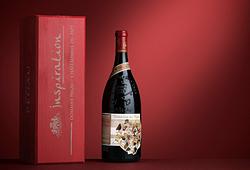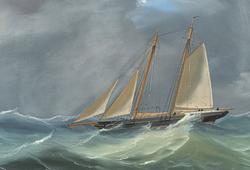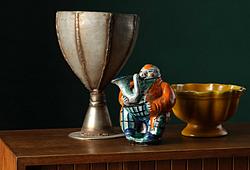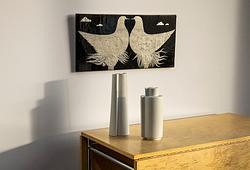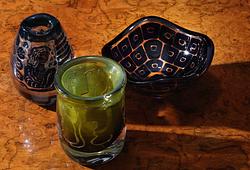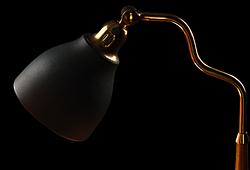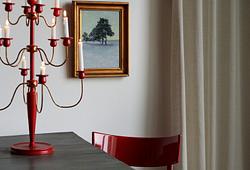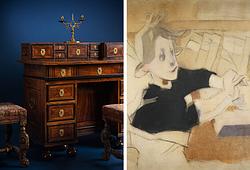Axel Einar Hjorth
A set of 4 stained pine 'Utö' chairs, Nordiska Kompaniet, Sweden 1930s.
Height 80 cm, seat height ca 43 cm.
Muut tiedot
The rustic pine furniture "Lovö" whose namesakes sit dotted amongst the Stockholm archipelago were designed at Nordiska Kompaniet by the architect Axel Einar Hjorth. Interior designers and buyers worldwide are now queueing up to decorate their homes with his modernistic and refined furniture. During the early 1930s, many Swedish summerhouses were fitted out with Hjorths modernistic and functional pine furniture. He showed his talent as an architect by transitioning from designing furniture in exclusive Swedish Grace-era for a small number of clients to drawing groups of furniture for the growing middle class who with a better economy, had the opportunity to furnish their new summerhouses with the most modern pieces of the time.




